Learning to Cook
Someone asked me one day, “How did you learn to cook?”
I stopped and thought about that for a moment.
“What’s the matter?” she chuckled. “Don’t you know?”
“Oh I know,” I answered, “But it’s not a simple answer.”

Cooking is one of those enjoyable life skills that found me almost by accident. My mom was (and is) a fabulous cook, taught by my grandmother, also a fabulous cook. A host of sisters, aunts, cousins, nieces, and friends bring their talents to the table, literally, as well. But how did it all START?
I remember even as a child, helping my mom in the kitchen. She was a hard working lady, seldom, if ever, sitting still even for a moment. Her fingers were always flying– picking beans from the garden, snapping them on the porch and sending them “pinging” into the stainless steel bowl at her feet. She pulled weeds and hung sheets out in the warm, golden sunshine to dry beneath the endless blue sky. She would often send me to the garden before supper, instructing me to grab an onion or two, a blushing heirloom tomato, and maybe a few cuts of lettuce. Many was the summer evening when we ate outside on the picnic table under the maple tree, the salad in the center still warm from the sun.

She taught me to recognize different herbs and how to care for and enjoy plants. She showed me how to dust cayenne pepper on the leaves of the early broccoli and peas to protect them when the rabbits threatened to wipe out the whole crop. So if you find any rabbits out there that love Mexican food and hot sauce, that’s probably our fault. We gave them a taste for the stuff. 😉
She used fresh, seasonal ingredients in her cooking all the time. She was a farm to table cook long before it was trendy to be so. We ate what was in season– because it tasted best that way. Sometimes people have a vision of gardening as this pristine, beautiful, movie-esque experience where a woman in a flawless sundress skips merrily through a sun-drenched garden, singing and picking a sprig of this and a bit of that before placing it into her tiny basket and twirling her way happily back to her gigantic, equally as perfect kitchen and preparing a meal. “Picking freely and effortlessly whenever we want!” But the reality is far different.
The truth is, when something ripens in the garden, especially in a garden as large as my Mom’s was, it is all hands on deck to harvest, prep, and preserve those vegetables before it’s too late and you lose them to overripening, animals, or frost. When green beans were in full swing we would often pick several Walmart bags full of them each day. If you left the beans on the plants too long they became yellow and tough– and inedible. You had to pick them every day, and then those beans had to be washed, snapped, and either canned or blanched and frozen on sheet trays for the freezer. We ate green beans almost every day in the summer, to be joined in mid to late summer by corn, and then around July and August by so many tomatoes that you lost count of how many of them you had picked, prepared, and preserved.
The first crops of the year are the cold weather crops– lettuce, green peas, and onions– they can go into the ground when it’s still quite cold out (and occasionally even survive the winter if well covered), and they are among the first fresh things that you see on the table. They come as a welcome reprieve of freshness– a pop of green on the table after eating the same preserved and dully colored winter food for so long.
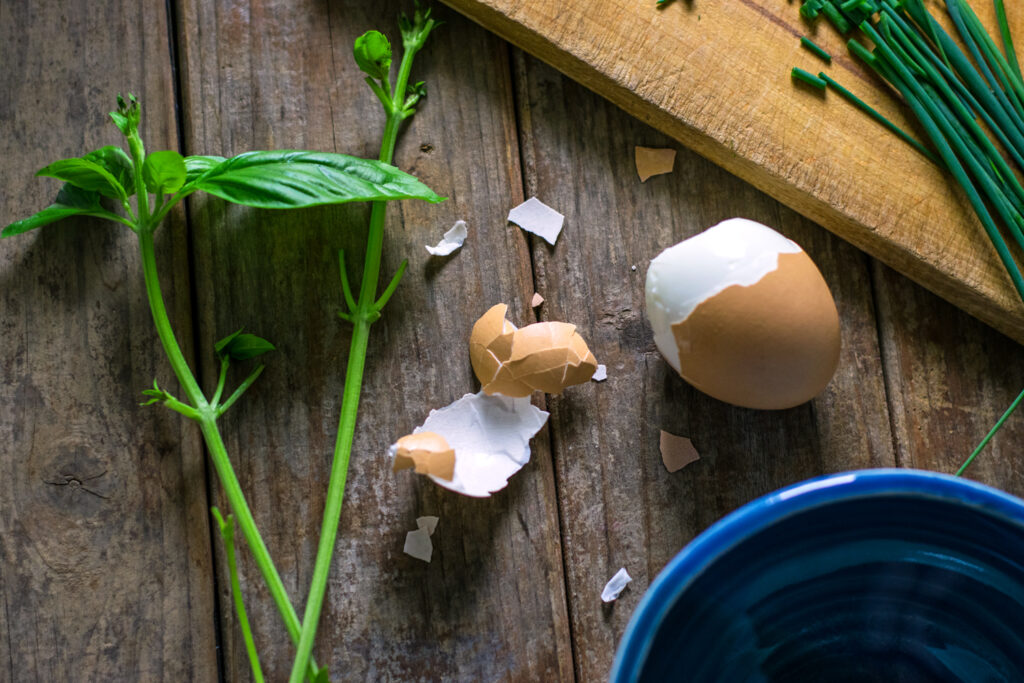
Then comes the planting of your other vegetables– green beans, peppers, corn, tomatoes, zucchini. It will be a while before you see the fruits of your labors on these, but the young plants still need to be looked after. I remember that many mornings we would look out and see deer, rabbits, and even the occasional possum eating delightedly in the garden, wrecking our tender sprouts on their all-you-can-eat buffet. We covered the young plants with milk jugs with their bottoms cut out, to protect them until they were bigger. And of course we also dusted them with cayenne, which caused the rabbits to put on sombreros and start salsa dancing. But that’s another story.
Through the winter and during those in between months when the garden wasn’t ripe yet, my Mom cooked mostly from her store of canned goods downstairs, which we had spent the previous summer putting up from last year’s garden. She would inspect her rows and rows of jars, sitting there glittering like so many jewels, in the dim basement light. She would survey the selection, then grab something and head upstairs to use it for supper. Just about the time our jars were running low the next season’s garden was underway, and the whole process would begin again.
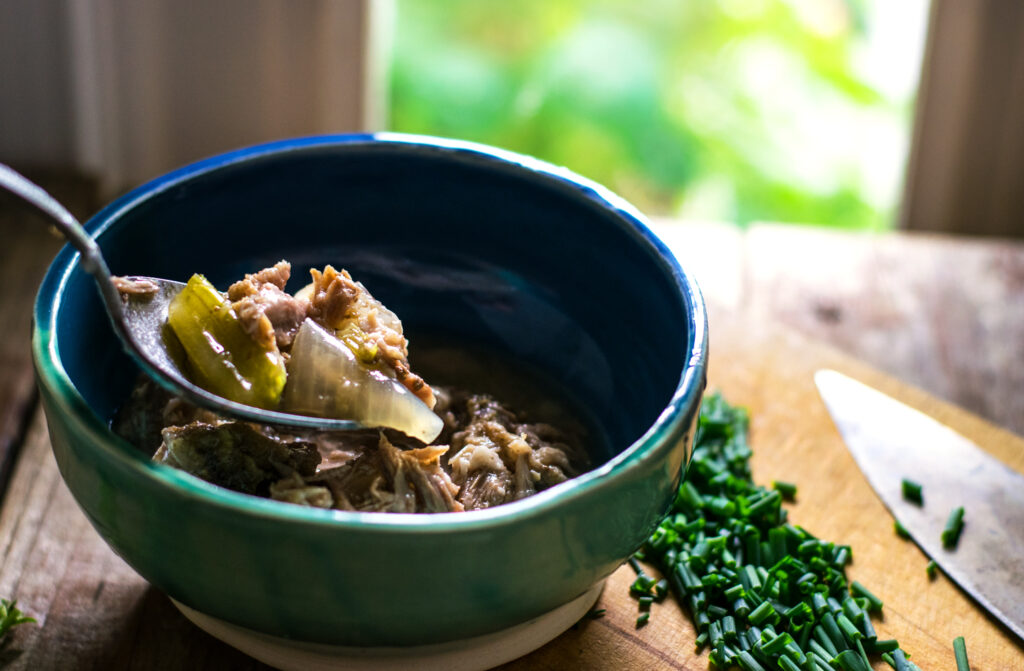
My mother’s cooking, like mine is today, was an interesting blend of knowledge from all the cooks who had mentored her, most notably her mother– my grandmother. To this day my Mom does certain things the way my grandma always does– like whisking eggs in the same measuring cup you just used to pour milk, to save dishes, or making “pie dough cookies” from leftover pie crust so that nothing is wasted. She always makes vegetable beef soup on Mondays, the day after we had roast beef for Sunday dinner, using the leftover beef bones to make a rich stock that she simmered all day. I always knew that chicken noodle soup would follow a whole chicken– again, the bones being used to make stock. Nothing was ever wasted. Fresh garden onions would find their way into everything, with the green tops also being used to add garnish and crunch and fresh flavor. My mom loves basil and would often substitute it for the greens in her salad or sandwich, its rich, earthy scent wafting throughout the kitchen as she chopped it, still warm from the sun, on her old cutting board.
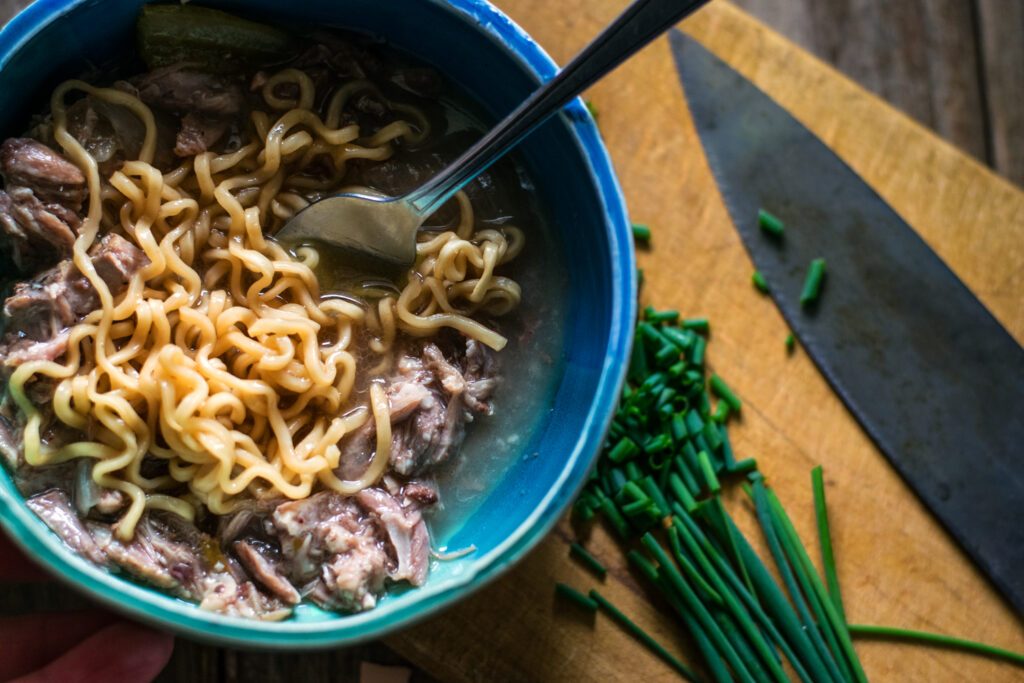
We always helped her in the kitchen, but I think I must have been about 12 or 13 when Mom started letting me cook one complete dinner a week, all by myself. She would leave in the morning for work, but she would leave directions sitting out for me, written in her precise handwriting, explaining just what to do. I could see the meat sitting out on the counter defrosting, the spices I would need placed beside it, and the pans I would use sitting on the stove. She always left a note: “Dad is here, and you can call me anytime if you need help.” I chuckle remembering how I would call her at work to ask what the difference was between tsp. and tbsp. What does it mean to blanche? How do I sauté? How the heck do I get this garlic out of the little papery jackets? These were the days before googling information, and her coworkers would just hand over the phone when I called. “Debbie, it’s your daughter again.” She never got mad. And gradually I started learning enough that I didn’t have to call for help anymore. I knew what to do because she had taught me.
Usually the meals in the beginning were simple– kind of “dump and bake” type casseroles, with a meat, a starch, and some sort of canned cream soup to bring it all together. I remember in those early days feeling overly confident from the flush of first success and adding many strange spices from the cabinet, just to see how it would taste. I figured that the more spices I added, the more complex the recipe and the better it had to be as a result. What if . . . what if we added EVERY SPICE in the cabinet! That would be an amazing recipe! (PS, my mom had an entire cabinet dedicated to spices, but thankfully I ran out of steam around the time I reached the pickling spices).
But I was wrong. My spice army didn’t play nicely together. Mom said, “More doesn’t always mean better. Before you add something, taste it. Your final product is going to taste like that. If you don’t like it, then don’t add it.” She was right. To this day I taste as I go, the same way my grandma always did, and the same way my mom does. Add a little seasoning at a time, tasting as you go. That’s the way to get it seasoned exactly the way you want it. Mom always said, “You can always add more, but you can’t take it out once you put it in there.” And I go by that adage to this day.

My grandma didn’t use recipes very often, but my mom did– with a twist. She loved getting the original Taste of Home magazine and poring over it, deciding what new recipes she wanted to try. She always told me that “a recipe is just like a roadmap. It’s one way to do it, but there are other ways. Make the recipe the way it says the first time, and then make it your own.” Still today I do that– I try a recipe as written, and then I add my little tweaks and changes based on what I liked or wanted to change about it. Recipes are kind of like families– all of them are a tiny bit different, and you do what works best for you. A recipe is a place to start– not a place to finish.
Thanks to Mom I now know what many different spices taste like. I can read over a recipe and already tell if I will like it or not, as my tongue begins to picture the flavor profile that the recipe is describing. I already know what spices I will switch out, kick up, or tone down, before I even begin. I know that I will taste as I go, and then adjust the seasoning level to the way I want it to be. I have learned how to cook like generations of women before me– by using what I know to understand what I don’t.
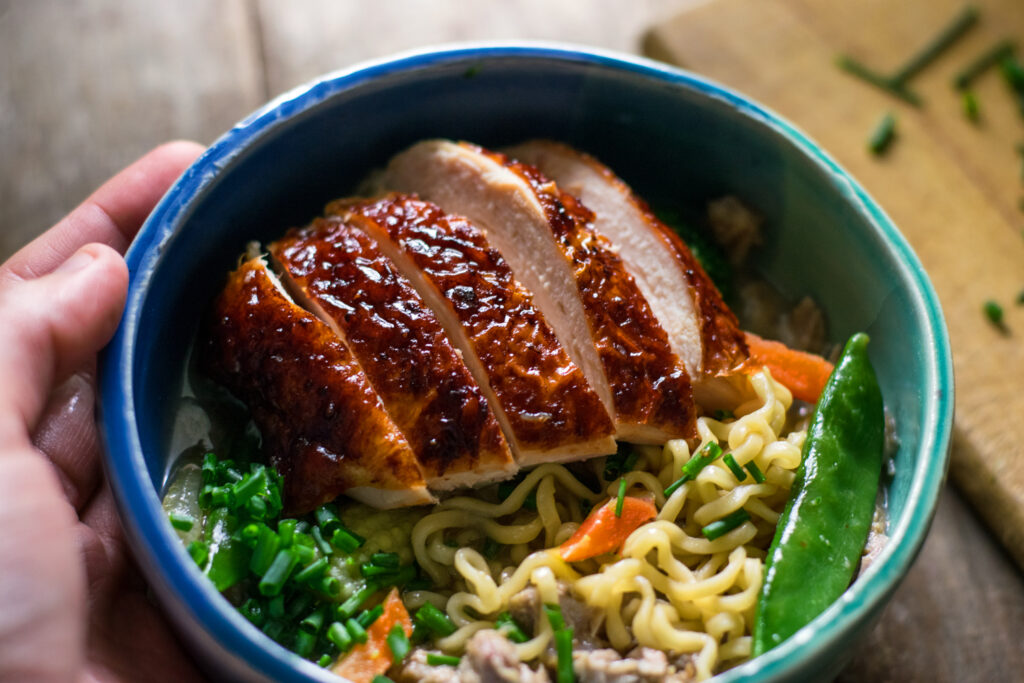
You can tell so much about a person by the food on the table. What did the cooks in that family specialize in? What is the dish that they prepared when there was company coming? What constituted a family feast– a real treat where everyone gathered and ate and enjoyed? Did the women do all of the cooking, or did the men join in? The story of a family’s food will tell you the story of the family.
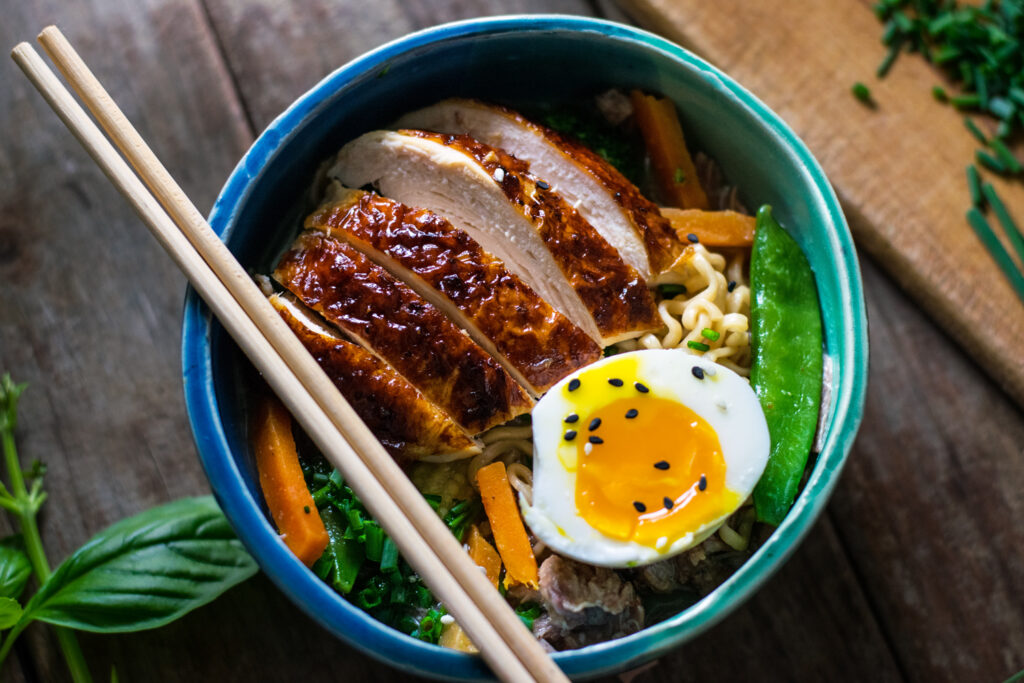
Each generation of cooks takes what their mentors have taught them and makes it their own. Grandma never used recipes. Mom always started with a recipe, and then made it her own. I do a little bit of both.
Gram tended to stick to the tried and true Pennsylvania recipes– pork and sauerkraut at New Years’, potato soup in the middle of winter, warming you from the inside out, and ham and green beans in the summer, when beans were almost coming out of our ears from the prolific garden. Potato rolls and apple pie and strawberry jam. Red cabbage slaw and cabbage rolls and corned beef and cabbage on St. Patrick’s Day. Roast beef on Sunday. Vegetable beef soup on Monday. Homemade bread always. Pie instead of cake.

Gram stuck to what she grew up with. She was an incredible cook, but not necessarily an adventurous one. I remember vividly the time we took her out to lunch at a Chinese restaurant, because she had never tried Chinese (admittedly, Americanized Chinese) food before. She was obviously uncomfortable from the time we entered the restaurant. She kept whispering to me and asking what things were in a hushed, embarrassed voice. She put a few things on her plate but barely tasted them. I could tell she was worried that there was some freaky ingredient like cat meat or bugs or squid inside (there wasn’t), but she wouldn’t admit it.
In the end the only thing she enjoyed was the scoop of vanilla from the case holding Hershey’s ice cream (a local brand) for dessert. She put a few peanuts on top, drizzled it with a little chocolate syrup, and ate it happily, remarking, “Well now THIS isn’t too bad!”

My mother was much more adventurous in her kitchen. She loved trying recipes for cuisines of different cultures. She would study the recipe intently– sometimes having to buy things we had never heard of, like Chinese 5 spice or Fish Sauce. She would bite her lip and follow the recipe carefully, adding strange ingredients and making sizzling steam that smelled like no food we were familiar with. She bought chopsticks– we had a blast trying to pick them up and use them, dropping about every other bite until my dad finally declared “I’m getting a FORK! This is RIDICULOUS!”
But the point was, my mom wasn’t afraid to try new things. To this day, she is adventurous– always happiest when she is learning about something new– learning how, as always, to make it her own. She never backs down from a challenge. She always gets the job done, no matter how long it takes to conquer a new skill. And her life (and ours, by proxy) is richer for it.
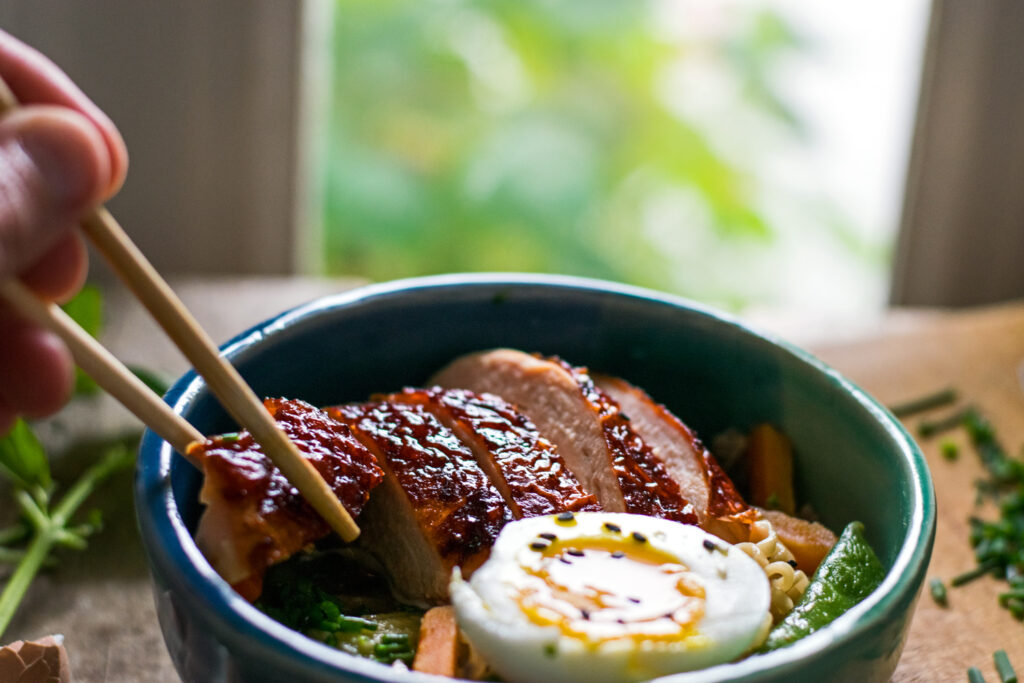
Without my mom, I never would have learned that vegetables fresh from the garden barely resemble their pale, flaccid cousins from the grocery store. I never would have learned that a freshly picked strawberry, though so much smaller than the ones you can usually buy, is packed with a juicy, sunshiny sweetness that simply cannot be duplicated by the gorgeous looking, but sadly hollow and tasteless strawberries imprisoned in their little plastic packs at the store. Most of those poor little things are shipped in from South America when they have barely had a chance to be ripe. They are far from home, and you can tell they aren’t comfortable. Please– someone tell them that they can find cayenne on the sweet pea aisle. 😉

Without my Mom, I would never have learned to cook. And I certainly would never have learned to enjoy it. It’s as simple as that. Through her excitement and exploration of new flavors, cultures and ingredients, she taught me to love it, too. She taught me not to be afraid to try new things, or to change them up a little bit to make them my own. She gave me not just a life skill, but a life passion.
My mom is still an amazing cook. When we go out to eat she will still pick something new off the menu, just because she has never tried it before. She will still offer me a bite off her plate, saying, “This is so good. What is that spice in there? We have to try to make this when we get home.” She still reads her old Taste of Home magazines. She still makes notes in the margins of her cookbooks by certain ingredients (“Can leave this out or substitute rosemary in a pinch,” or “MORE BASIL!!!!”). I’m learning the lesson that she was always teaching me, through her example– that in any cuisine, the most important ingredient is love.
“There is no spectacle on earth more appealing than that of a beautiful woman in the act of cooking dinner for someone she loves.” — Thomas Wolfe
You did it.
And I’m just so proud of you.

Disclosure: This post may contain affiliate links, which just means that we get a few pennies if you purchase through our link. I never recommend products that I don't personally use and love. Thanks!
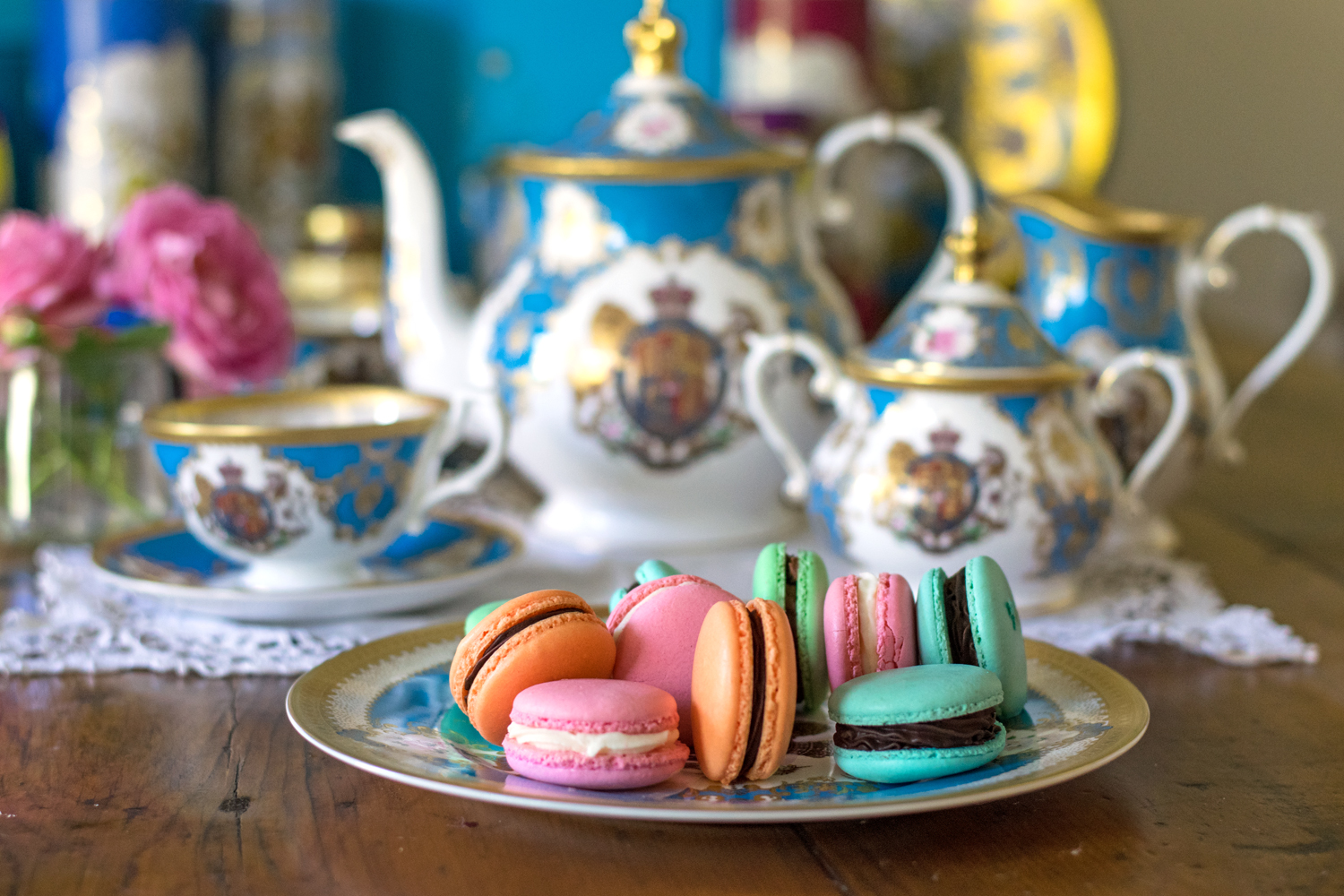

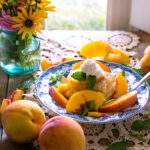





Wonderful post! Keep up the good writing.
Thank you 🙂